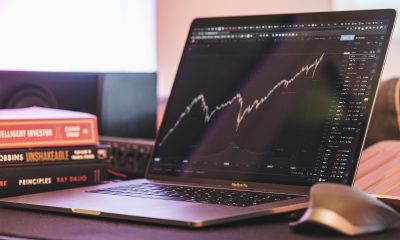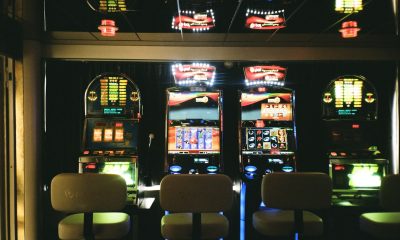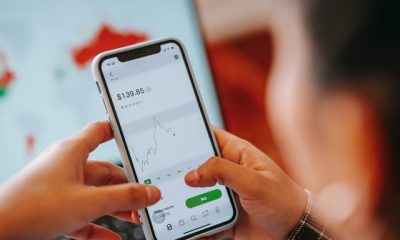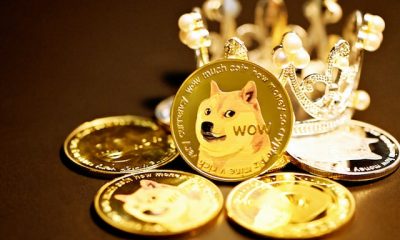Crypto
LODE Markets: the digital “Amazon” of Gold and Silver
The on-demand economy has made it easier than ever to acquire products and services with the click of a button. Now, one project is making it possible to pay for these items with gold and silver, through the establishment of a new marketplace: LODE Markets. And in so doing is changing the way we think about money and bringing a sound currency into the new digital age.
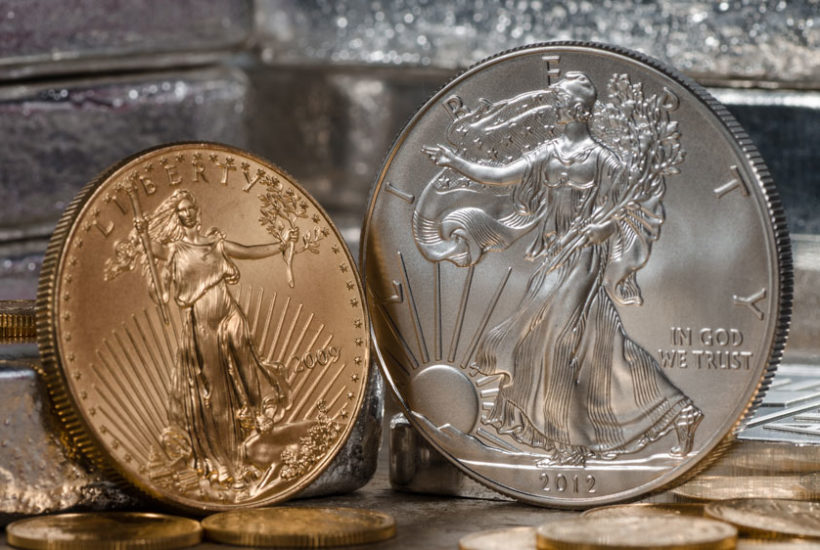
For most of modern history, we have paid for everything with cash. “Money” is a term used to denote the legal tender accepted as a payment method for any debt, serving as both a means to compensate for a product or service, or to simply represent wealth. What we have historically referred to as money has often taken the form of bank notes, however more recently, we have gradually shifted towards digital money. This is the money that sits in our bank accounts, redeemable for the tangible notes, but also easily transferred in markets between institutions and individuals as Amazon has proven.
A digital market has emerged and shifted our understanding of currency
It is then easy to argue that we began the transition to the digital economy decades ago. It wasn’t until 2008, however, in the backdrop of a financial crisis that would be felt for years following, that a relatively new technology was deployed with the hopes of restructuring the financial system: blockchain. The introduction of cryptocurrencies added a whole new spectrum of assets to the alternative investment space, accompanying gold and silver, assets as old as time, as a way to diversify investor portfolios and hedge against the devaluating nature of the U.S. dollar.
While precious metals like gold and silver have been trusted representations of value for millenia, they have traditionally not been able to assume the role of modern day currency due to their sheer physical qualities, as heavy assets that are difficult to transport and protect. Cryptocurrency enthusiasts have asserted that digital assets are superior as mediums of exchange, easier to transact thanks to their digital nativity.
In an increasingly digitized economy, where marketplaces have shifted online, accelerated by a global pandemic and the rise of digital giants like Amazon and Google, a new debate has come to the forefront, with one question at its center: what does the future of money look like?
The Debate of Intrinsic Value: Precious Metals vs. Cryptocurrencies
Grayscale, a digital currency asset manager, launched a campaign in 2019 titled “Drop Gold” to deter investors from investing in gold by comparing its qualities to those of digital currencies like Bitcoin. The argument, as described by the campaign’s website, was that “gold represents the past,” whereas Bitcoin and blockchain technology represent the future of finance. The campaign amassed attention from cryptocurrency enthusiasts and precious metals stackers alike, as the hashtag #dropgold made its way around Twitter and other social media platforms.
The campaign also seemingly prompted the World Gold Council to weigh in, with senior analyst Adam Parley authoring an article that dissected the primary differences between cryptocurrency assets and gold.
“Although cryptocurrencies and blockchain technology look promising as a whole, they clearly do not represent a substitute for gold either in theory or in practice,” wrote Parley. Listing their varying characteristics, he noted that gold has an established role as a safe-haven investment, hedging against market volatility and economic uncertainty.
However, advocates of the #dropgold campaign said that bitcoin is more effective as a medium of exchange, due to its ability to facilitate real-time payments by utilizing blockchain technology. What if we could have the best of both worlds: the stability of gold and silver with the market flexibility of cryptocurrency?.
Don’t Drop Gold: It’s a liquid asset perfectly adapted to the digital market with LODE
The advent of blockchain technology is increasingly being viewed as a groundbreaking development not only for its applications in the financial industry, but also in a variety of other sectors, like healthcare, real estate, and transportation. However, it is now being repurposed to give precious metals its place in the digital economy, courtesy of the LODE Project.
LODE’s blockchain-powered monetary system is restoring utility to the precious metals, digitizing gold and silver to create tokenized versions that can be used for day-to-day purchases. AGX (digital silver) and AUX (digital gold) are now being heralded as mediums for the future of commerce.
“LODEpay has the infrastructure in place to make precious metals like gold and silver easily obtainable, transactable, and spendable,” said a LODE representative. “Grounded by real-world assets, AGX and AUX are specifically designed for trade and commerce, versus simply being held as a store of value.”
LODE’s proprietary marketplace, LODE Markets, is representative of the spending power of these digital assets. LODE Markets enables members of the LODE Community to spend their digital gold and silver to fund a variety of products and services, including travel expenses, hotel stays, advertising opportunities, and even, of course, purchases of physical gold and silver. Basically, the Amazon.com of purchasing, and spending, gold and silver: all the ease without any hassle.
This is an elegant answer to the dilemma between precious metals like silver and gold, and cryptocurrency like bitcoin and ethereum, just unite the two! It is also a prime example of the market shift towards modern solutions adapted to the needs of the digital economy, but still grounded in tangible value.
(Featured Image by Lucid Gold)
DISCLAIMER: This article was written by a third party contributor and does not reflect the opinion of Born2Invest, its management, staff or its associates. Please review our disclaimer for more information.
This article may include forward-looking statements. These forward-looking statements generally are identified by the words “believe,” “project,” “estimate,” “become,” “plan,” “will,” and similar expressions. These forward-looking statements involve known and unknown risks as well as uncertainties, including those discussed in the following cautionary statements and elsewhere in this article and on this site. Although the Company may believe that its expectations are based on reasonable assumptions, the actual results that the Company may achieve may differ materially from any forward-looking statements, which reflect the opinions of the management of the Company only as of the date hereof. Additionally, please make sure to read these important disclosures.

-

 Africa2 weeks ago
Africa2 weeks agoBantuHub and L’Archer Group Partner to Invest €1 Million in Congolese Startups
-

 Business1 week ago
Business1 week agoThe TopRanked.io Weekly Digest: What’s Hot in Affiliate Marketing [Super Partners Review]
-

 Business3 days ago
Business3 days agoThe TopRanked.io Weekly Digest: What’s Hot in Affiliate Marketing [BullionVault Affiliates Review]
-

 Biotech2 weeks ago
Biotech2 weeks agoChai Discovery Becomes a Unicorn with $130 Million Series B to Accelerate AI-Driven Drug Design
